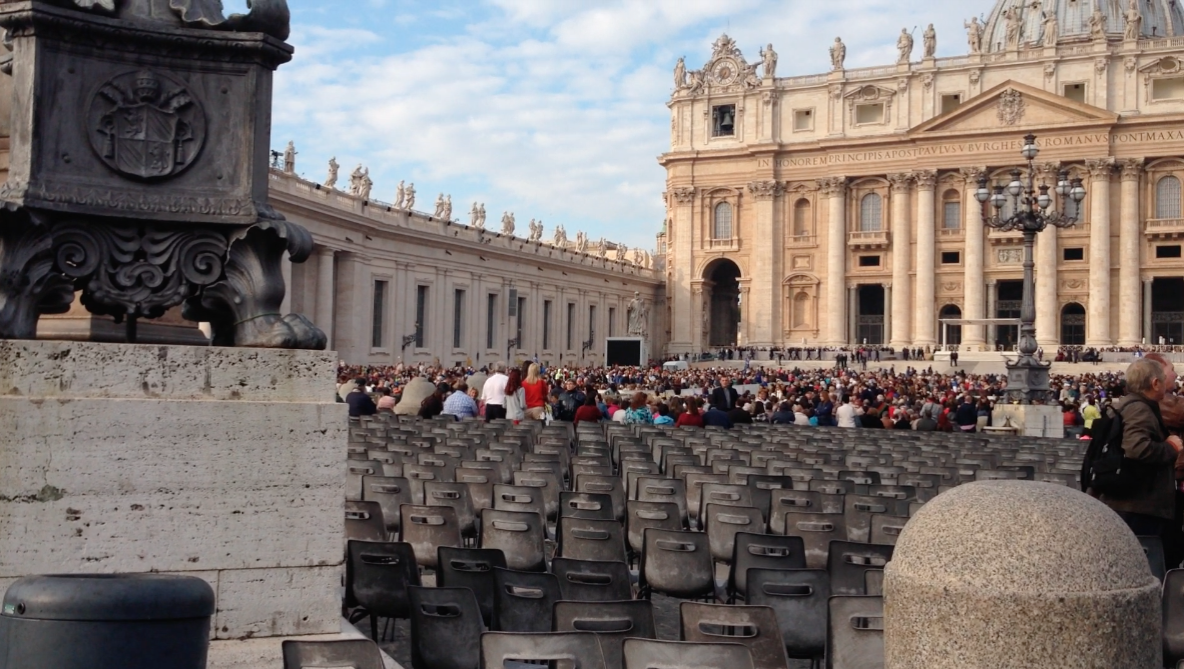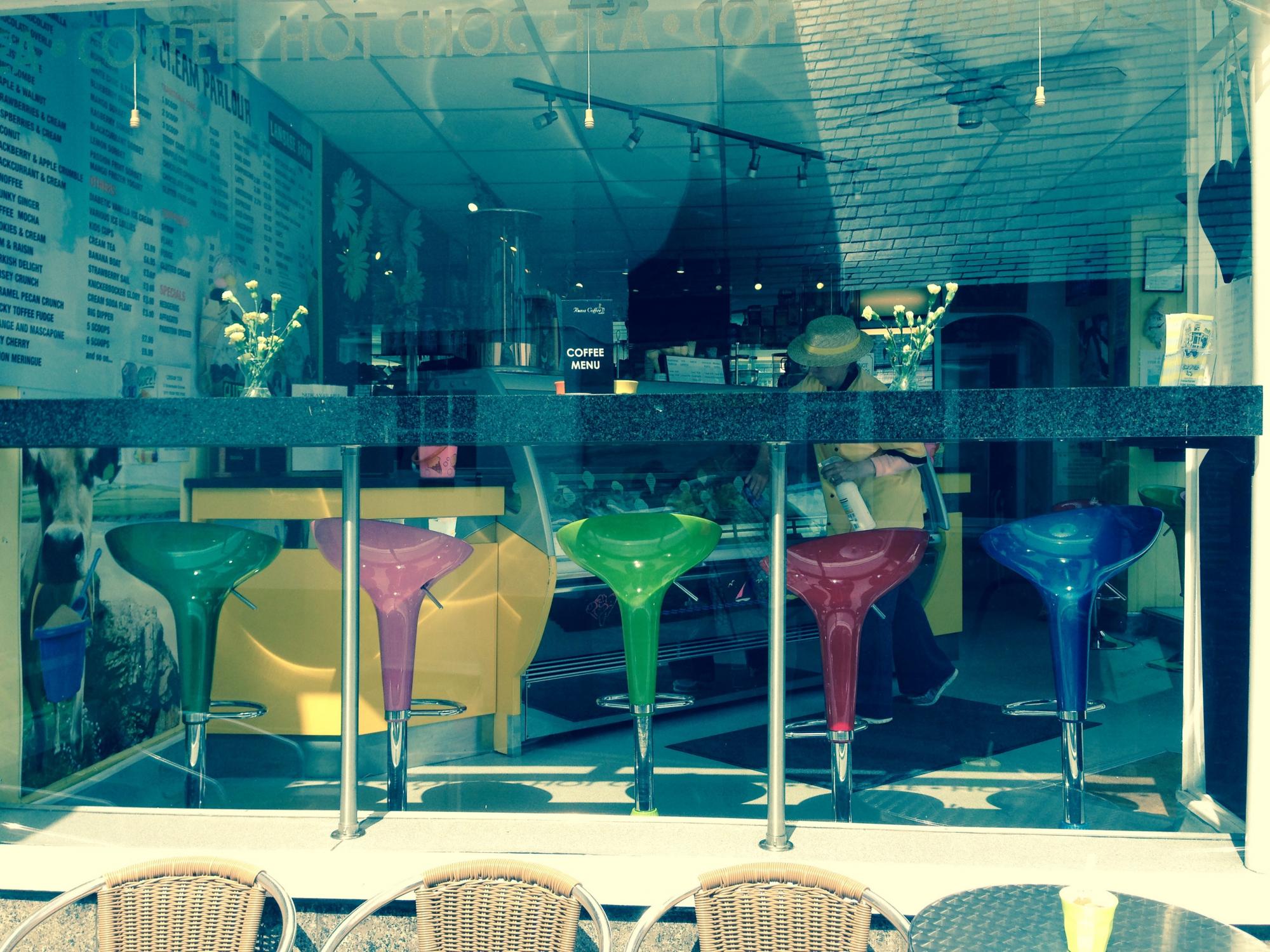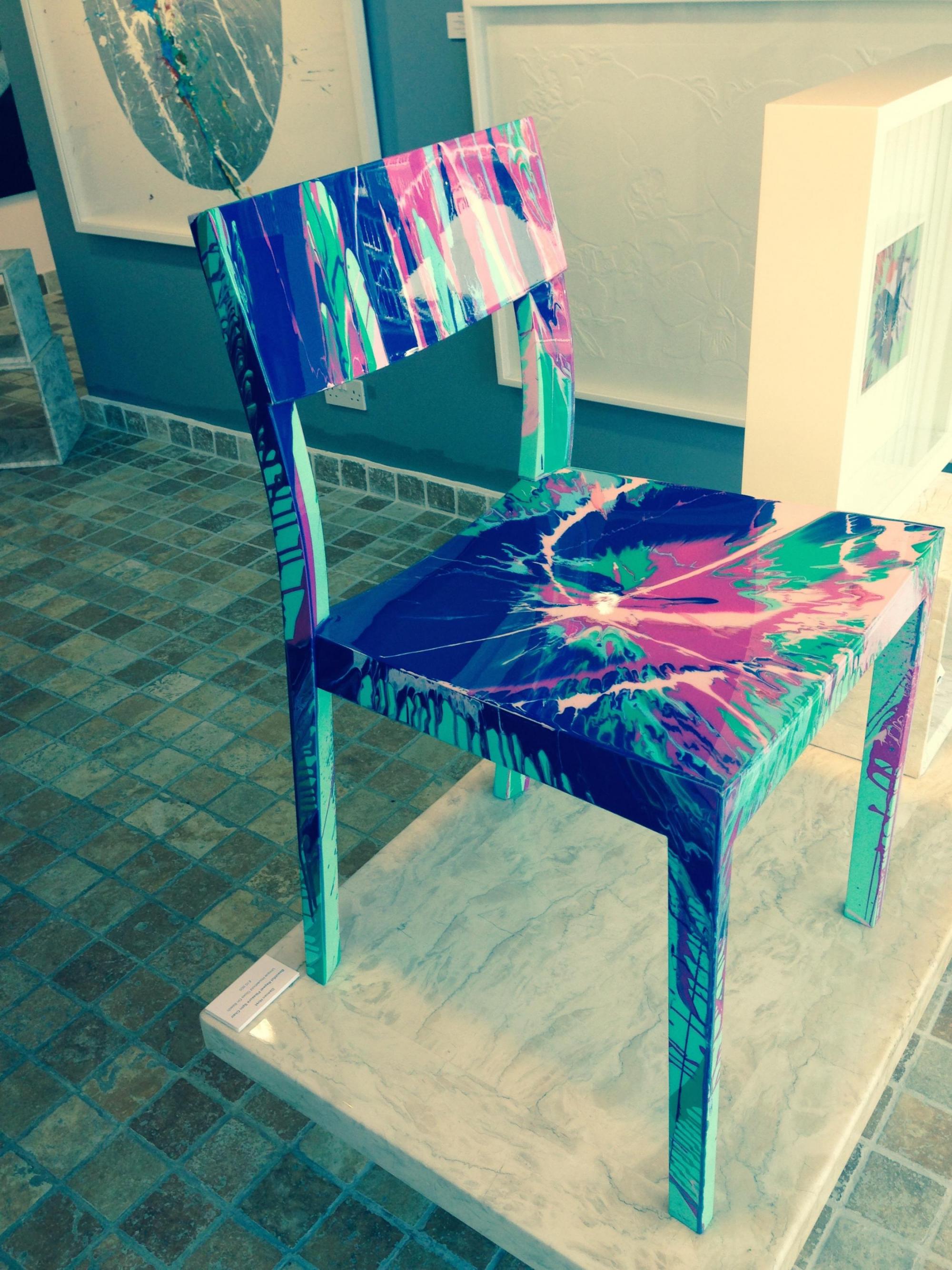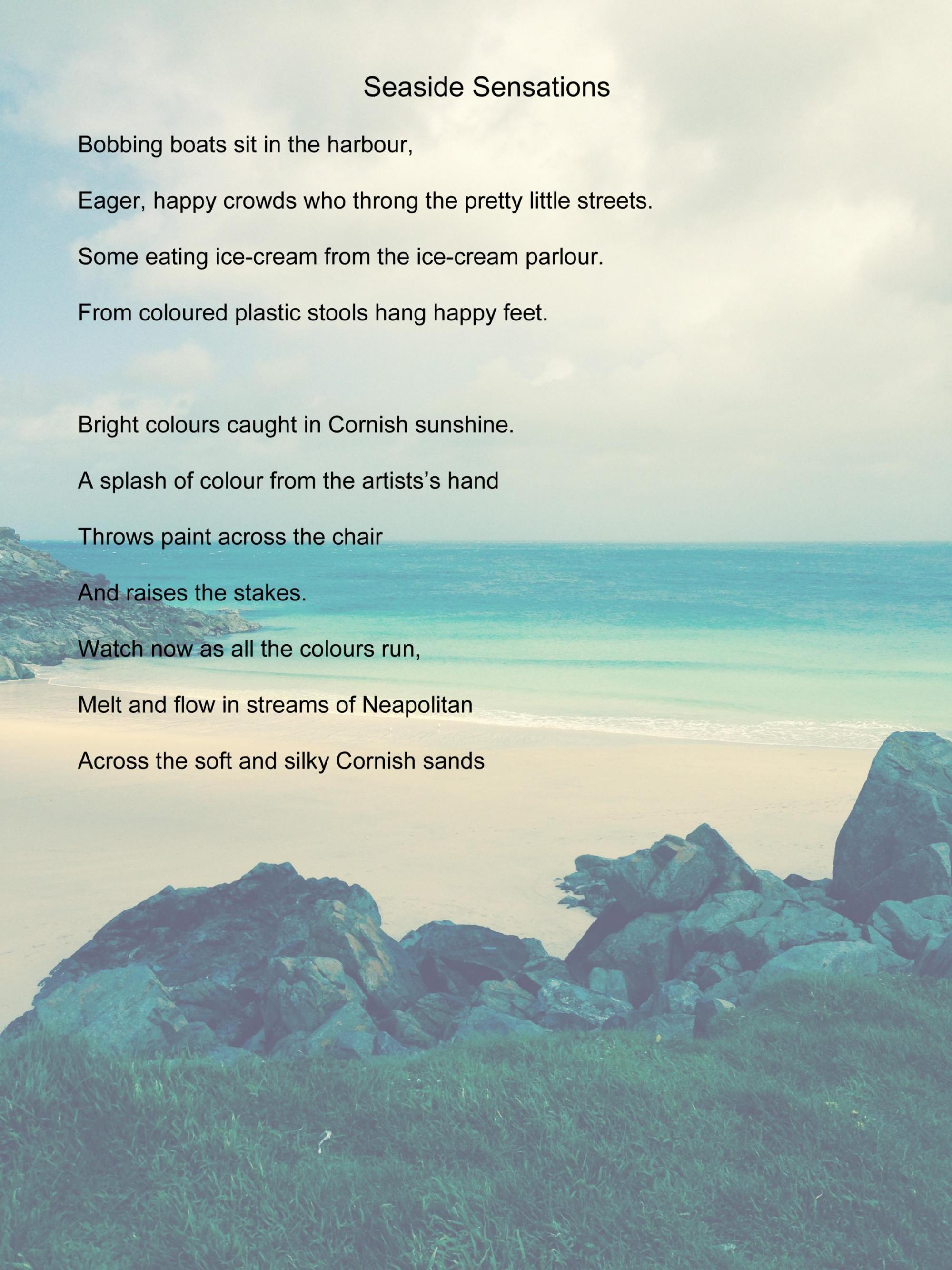Student Writer in Residence
In 2014 / 2015 MoDiP appointed a Student Writer in Residence. Kate Hall is a Doctoral Student at the Arts University Bournemouth. She writes across a range of contexts and publishes her work online. She uses creative writing as her art practice and an anthology of creative writing will be part of her Doctoral output. With support links to the Museum of Design in Plastics, she will draw on objects from the collection to inform her work. The chair made of plastics will feature as the central object around which a literary narrative will be created alongside the critical component of the thesis.
Kate's first blog post - Behold, the Great Pretender
Somehow I have become the current Student Writer in Residence at MoDiP and it represents a challenge as well as an honour for me. I am not a published author or poet in the traditional sense of the meaning. I am a Doctoral candidate at the Arts University Bournemouth who is taking a creative writing approach to my thesis. This places writing (and reading) at the heart of what I do. It probably also suggests that writing is somehow embedded in my being, it is an imperative. This is now very true.
As the current Student Writer in Residence, I am charged with producing something creative on a regular basis. This is an exciting task as writing in the real world demands deadlines and outcomes. So I will be presenting three pieces of creative writing over the next year and what that will be is yet to emerge. This is part the enigma of writing, I never quite know where it will come from but when it does, I have to go with it. My Doctoral work is an attempt to uncover some of the mystery of the process of writing creatively. Why am I drawn to the poetic form?
That is the stuff of a thesis, but in short, it is short, sharp, powerful, and punchy on the one hand but the tendency toward illusion or allusion allows for the writer to play and give license to the reader to tussle with meanings both general and personal. Poetry can be much bigger than the poet. It can capture huge stories in a short space, focusing the macro into a more manageable size. It concentrates and coalesces emotions, messages and our stories.
Behold, the Great Pretender is a poem dedicated to the masquerade of plastics.
I wrote it in response to and as a complement to the Is that Plastic? - an exhibition that celebrates the magic of plastics in contemporary culture and society. Beyond the practical, everyday nature of the material there is an alchemy, an allure which draws me, the creative writer to explore its essence, its being.
MoDiP hands the poet in me, on a plastic plate, naturally, a perfect opportunity to play with a familiar literary device manifested and materialised through the exhibition Is that plastic?
How could I resist a metaphor and for that matter a skeuomorph?
And walking through the exhibition, I found myself mesmerised, fascinated and intrigued by the myriad of ways that plastics have copied other things, other materials that we find in our ordinary existence.
Plastics, and more specifically artists and designers, have stretched the boundaries to recreate art, beauty, truth and even life itself.
This poem attempts to touch the issues that were revealing themselves to me as I wandered through the displays.
My mind was flooded with responses; the mimicry, the pretence, the fax simile, the substitution, the replacement, the guile, the falsehood, the changing, reshaping natural world, the duplicity, the waste, the potential of human inventiveness, our superficiality and ignorance.
It is a criticism, it is a celebration, and it is an observation through my eyes.
Behold, the Great Pretender
I.
Shapeless, shameless, formless, nothingness
Moving toward something, anything, but what?
The magician's slight of hand brings to life,
To form, anything it desires.
A gifted child who sees the endless possibilities of play,
Unfettered, confined only by the whim of man.
II.
Symbol of our stay.
Mirror to our souls.
Exulted by design.
Lamented in decay.
Are you what you claim to be
Or has reality blurred our vision,
Preventing us from seeing.
III.
The great pretender
Scripted by the creator's hand,
Whose function has been lost,
Transforms into a symbolic gesture,
Substantiates material existence.
IV.
One eye fixed on the past.
The other firmly faces to
The next 'big thing'.
Standing on the threshold of
Re-defining who we are.
V.
Displacing others to fool the eye.
Aspiring to be, to satisfy the masses.
Drawing us closer to the unreachable.
Faux fur,
Faux life,
False god.
VI.
Textured, distressed, familiar yet inferred.
It represents the thing itself and echoes of the past,
Smuggling aristocratic values across the great divide.
And in so doing becomes it
Or so it seems.
VII.
Teasing senses with a new integument,
Appearing as a timeless edifice.
Can we trust this child of man?
Or is the fakery ours to own?
The eye may fall for such deceit,
The hands betray its counterfeit.
VIII.
Providing us with signs to navigate
In new landscapes and temporal crossings.
A comfort in transition toward a new aesthetic.
Replacing loss,
Restoring equilibrium.
Bodies robbed by violence or disease or want.
Minds disrupted with an absence,
Still sensing, needing presence where there is vacancy.
Filling such deep longing to be whole.
IX.
The oceans move now with abundant waste,
A toxic symbol of our transient, ever changing desires.
And yet from this primordial soup,
We force, we cast and press,
We reincarnate, re-use,
Creating a new estate, a new us.
Oh brave, brave new world.
Kate's second blog post - Pater Noster
Foreword
I am often asked what is there to say about a chair made of plastic.
In the past I would probably have done what many people do, that is to ignore it, walk on by or take it for granted. My association with the Museum of Design in Plastics has changed all of that. I now look at the chair of plastics in a new light, it has become my friend and in a way my muse. I see a plastic chair everywhere and record its existence in image and verse, placing it centre stage in an inescapable relationship with all of us.
My latest contribution as student-writer-in-residence to MoDiP was conceived from a humble plastic chair observed with thousands of its comrades in a most extraordinary place. It is a place that is not normally recognised for its plastic chairs but other things entirely.
A trip to Rome is sure to be filled with art, architecture, history, pasta, coffee and colour. It assaults the senses and leaves its mark on most of those who travel from all over the world to visit its sites, ancient and new. It is also home to many plastic chairs, at the cafés, bars, and restaurants where detached, imperious staff are eager to draw in the many visitors who have come to share Rome's colourful way of life, for a few days, a week, perhaps. Many travellers are just passing through on the eponymous 'European Tour'. I keep coming back because I have family there and a more than useful excuse to visit this eternal city.
The Vatican is at the heart of Rome and for many Catholics, it is seen as their spiritual home. The journey of Christianity has seen many a scene played out within its boundaries and in Rome itself. The presence of the Pontiff makes it a place of pilgrimage and brings with it all the trappings associated with a place of special religious interest.
Having been raised an Irish Catholic, I am very aware of its role in my life, having had its doctrine implanted firmly during my childhood and early adolescence. Regardless of my current lack of religious enthusiasm, I was, like many drawn to the weekly Papal audience in St Peter's Square, a 'must-do' on the tourist list.
It was a square filled with upward of 30,000 human beings and thousands of grey chairs. The counterpoint of Bernini's warm and glowing architecture was in marked relief against a swathe of grey plastic chairs set-out in row upon ordered row, all anticipating the arrival of thousands of visitors, some there for their immortal souls, some for the satisfaction of having been there, witnesses to something unique.

'Anticipation' by Kate Hall 2014, St Peter's Square, Rome.
The chairs, whose maker I was unable to establish at the time were distinctly based on a British design by Robin Day. One of the most celebrated, pioneering modern designers, he transformed the face of furniture with his innovative designs and application of technology. This poem is in part an homage or reference to him and his contribution to art and design. He could well be the 'Father' in Pater Noster.

'Abandonment'. Image courtesy of Rose Marie Peake, 2014, St Peter's Square, Rome.
The Vatican chairs may be 'copies' but they seemed to represent or epitomize so many different aspects of the human story combining them in a visual metaphor.
With no real sense of what to expect, I was open to the experience and its impact on me. 'Pater Noster' is a poem that was an immediate creative response to this brief visit, but one, which would remain with me through its images and language.
I chose to play with the contrast elements of art and design, of materiality, colour, individuality and collectiveness, of religion, of good and bad. Though the creative process of making this poem, I found it touched me on a deeply personal level, tapping into my own personal story as well making connections with my work and in particular my research activities.
Pater Noster
(Our Father)
Who came to see these grey chairs?
A holy sea of grey in a golden glow.
Thousands on a pilgrim's path,
following in the feet of thousands gone before.
Now casualties of zealous crowds who long to glimpse St Peter's heir.
They will make their offering again, without question, Day after Day.
Collecting stories from the multitude of Babel's Tower,
they continue to bear the weight of the hoards,
swelling the ranks of those who share the passion and the pain.
From on high the saints look on with nonchalant regard.
The grey against the golden glow, the flashing scarlet of the guards, a tiny white figure emerges to a roar of thousands in the square.
Contained and cheery chatter transforms into the cries of ecstasy and madness, as chairs are pushed and dragged and toppled against the human rush to reach the boundary and glimpse the simple man,
elevated to greatness by his peers, carrying the weight of a church on his small shoulders,
a church sitting at a crossroads.
Mothers reach towards the little man as he passes by.
Their babies thrust before him for his kiss, a blessed kiss.
Frightened, crying children thrown toward the cavalcade with little care for the precious bundle.
The chosen child is greatly blessed, its tears and fear ignored by an exalted parent.
Forgive our foolishness.
Who came to see these grey, unnoticed chairs?
Battered, bruised and weather-aged.
Honoured guests at lofty celebrations,
welcoming the new and bidding farewell at many passings.
Do they sit at the right hand of the Father?
Ordered and disordered.
Marking time, safe behind the Vatican line,
ignorant of a world beyond,
eyes closed to horror and betrayal,
keeping secrets through years of silence and duty.
Who came to see these grey chairs?
Will their Kingdom come?
Their sins be all forgiven?
Kate's next blog post - Seaside Sensations
Foreword
This piece of poetry found its naissance on a holiday to Cornwall and the beautiful coastal towns that skirt the Atlantic, St Ives and Padstow amongst them. Despite the hoards of tourists who flock there, from all over the world, this coastline still retains its natural beauty. It was clear to see why artists have been drawn to this opal coast where the sea, the sand and sky are transformed in a unique light and radiance that remains even as the sun disappears in the western sky.
A three-hour train ride or six hours on the road from London, does not seem to thwart the incomers. Vast numbers of empty cottages with plaques on their doors advertising their availability for rent, suggests that the population has changed and fishing is no longer the business for those who own these houses.
The sea for me is still the seaside, with buckets and spades, swimming in cold Atlantic water, getting scorched and sunburned, sand in your sandwiches and on your ice cream. Images of childhood flood the mind and transport you to another time and place.
Although I should not have been surprised by the preponderance of art galleries that there are in St Ives and Padstow, I was amazed that all these artists and gallerists could make a living, where supply far outstrips demand. But perhaps there is something for everyone and everyone trying to offer something different.
So against this backdrop and the high-end restaurants and galleries that now draw in the swelling crowds, I present to you my last contribution as student writer in residence to the Museum of Design in Plastics (MoDiP).
I wanted to play with verse. I wanted also to play with the discourse between function and form, art and design, around an object that has become my friend, a companion on my research journey, the plastic chair.
Finding an exhibition of YBA (Young British Artists) at a small but chic gallery in Padstow, my attention was drawn by a chair in the window. It was a chair of unexceptional design but transformed by its spin and splash of colours. It was by Damien Hirst.
Further along the street was an ice cream parlour, which also had chairs in the window. These were not by Damien Hirst.

'Ice cream Parlour in Padstow', Cornwall, May 2015, image by Kate Hall
The Bamboo Bar Stool in any colour and priced at around £35.00
Product Details
- 1 Year Guarantee
- Designer Style Stool
- Polished Chrome Frame
- High Gloss White ABS Seat
- Easy To Clean Seat
- Variable Height Gas Lift With 360 Swivel
- Protective Base To Protect Your Floor
- Available In Any Quantity

Damien Hirst 'Beautiful Repeat Pleasure Spin Chair', at The Drang Gallery, Padstow, Cornwall, May 2015, image by Kate Hall
Household gloss on beech, signed underneath. Price £10,000.00.
Made by Damien Hirst, commissioned from Jasper Morrison.
Product Details
- Household gloss on beech
- Other Criteria
- 31 × 16 × 17 in
- 78.7 × 40.6 × 43.2 cm
- Unique

Kate's last blog post - Reflecting upon a year as Student Writer in Residence
MoDiP has given me a year of extraordinary opportunities, in more ways than I can mention here.
Write poetry, they said and write poetry I did. What better gift can you give a poet?
I am a creative writer, a poet, I am a researcher, I am a doctoral candidate and I am tasked with finding my way through the muddy waters that flow between the banks of academic and creative writing.
It is a delicate balance and one which places considerable demands on the individual, requiring a blending of personality and character, a mixed methodological and method approach, a lived experience, a critical consciousness and simultaneously, the maintenance of a creative energy.
Thinking about Things
I love the contemplation of things, the consideration of the everyday, the mundane, the objects that share our lives. Like many others, I examine our relationship with them and the emotional responses that they produce. I look for meaning in the concrete and corporeal and poetic ways of mediating materiality.
My thesis specifically aims to examine the poetic relationship between words and objects and in particular, create a literary narrative for chairs made of plastics that provides a rich, accessible expression of their significance and place in contemporary culture. My year as Student Writer in Residence has enabled me to consider the MoDiP collection in different ways, to look for poetic possibilities and expression in the uniqueness of this collection.
Poetry and a Social Awakening
But it was never just about simply looking at inanimate objects. I attempted to adopt a panoramic perspective, looking outwards beyond the safe environment of the Museum onto the wider stage where the aesthetics of art and design are influenced by the sociological, the political and cultural events that shape our lives. Likewise, I was set the challenge of enabling others to look at the collection in different ways. It was not about converting people to poetry but rather, exploring alternative yet complementary methods of interpreting objects and things.
Why poetry? The selection of a particular genre has significance for the writer generally and the writer-researcher in particular. The choice goes beyond the writer's predilection for reading a literary form as it reflects a range of preferences and predispositions in the context of the writer's knowledge, skills and experience that draw the writer toward a genre and within it a particular style. The notion that the choice of genre is somehow mysterious or magical, that it is innate or intuitive, holds sway amongst modern writers. PD James, for example remarked;
I don't think we choose our genre, I think it chooses us
British Library Archive (2011)
The greatness of poetry is that it can move in so many directions. It is plastic! It can capture and distill the world, which we inhabit. At its heart is language and wordplay, providing the poet with a veritable toy-chest from which to construct and exchange meaning and knowledge. And in to this box, MoDiP also added one of the most significant materials of the last century, plastics.
The child was in paradise! Here was a material that is both loved and hated, in equal measure. Here too a material that was changing lives, for good or otherwise, transforming our world and us with it.
Writing poetry may be a very personal choice. It may even be considered to have 'died', in the words of the popular press (Fry, 2005; Petri, 2013; Thompson, 2014) but the evidence of activity across disciplines, suggest otherwise. Costello (2008) remarks of the history of poetry as a history of apologies and defenses, a catalogue of disconnected litany. Poetry is often regarded as too far removed from the real world and preoccupied with itself, with aesthetics. This state of affairs was highlighted in Poetry Matters and International Research on Poetry Pedagogy (Dymoke et al 2013), suggesting that poetry is disappearing from the school curriculum leading to a missed opportunity to enrich young people's awareness and knowledge of language, through the reading and writing of poetry, of engaging with how poets think and act in the creation of poetry. It is more likely to be experienced and enjoyed externally by young people through the multitude of interpretations available in the modern media, a place where much of new experimental writing is taking place.
Poetry touches people on many levels, not least an emotional one. Its purpose, according to Seamus Heaney is "to be of service, to ply the effort of the individual work into the larger work of the community", revealing it as having a social and aesthetic responsibility.
A significant challenge for me has been to measure or gauge readers reactions. Individual feedback to my work, albeit minimal, has been very positive. Some remarks suggest that I have enabled individuals to think anew about the ordinary, the quotidian, about plastics and things made of plastics. But I sense that poetry remains viewed as an ethereal form of creative expression, somehow elitist, read only by those who know how to read poetry.
However, the contemporary community of poets and poetry is buoyant and vital demonstrating that poetry and its place in the literary landscape is far from dead and has begun to cross disciplinary boundaries, no longer entrenched in literary or English Studies. It is to be found wherever people write of those things that are important or of interest to them.
A Final Poetic Word…..
It seems fitting that I should end this tenure on a poetic note. Here I offer a poem inspired by the chair of plastics, a particular chair and one designed by a superstar. Made in a transparent polycarbonate, it is a chair that holds cult status and is still, just a chair, or is it?
The Ghost of a Chair
Is there a ghost in the chair observing my rest?
No, the ghost is the chair and the chair is not there.
If the chair is not there, can I trust what I see?
Is it me who is here?
Is the chair really me?
Said the chair, from the seat,
I am yours to command.
But say I, should I stare?
Do I sit? Do I stand?
Thank you MoDiP. Thank you Susan, Louise, Pam and Katherine.
